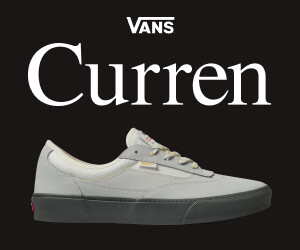The origin of things is important as they carry meaning for future generations to interpret. These histories are not static either — they morph and provide deeper or new meaning as time passes, experiences are lived, and new perspectives are formed. For these reasons, sharing and relearning our histories is essential.
Modifying the environment around you is closely linked to the psyche of a skateboarder, as we look at things differently from most of the civilian population. We constantly transform the mundane objects of urban life into a creative tool kit, even if it’s just in our wildest dreams.
Despite all this dreaming and experimentation, the imperfect world we live in always needs modification. These improvements could be a smattering of wax on a ledge, taking a flat bar to the brand new skatepark, unlocking a gate or a more elaborate transformation to breathe new life into a redundant space.
Sam Palmer (alongside many others) paved the way for spaces like Wellington’s Newtown Ghetto Spot, Berhampore’s Treetops, and many other less permanent installations.
Some began with simple acts like placing a “borrowed” bench in a disused basketball court to broaden the spot opportunities. Others were more thought-provoking, offering a lashing of social commentary while still delivering incredible amounts of radness for the skaters that frequented them.
Hopefully, his words inspire you to pick up a trowel for the first time or double down on your DIY conviction.
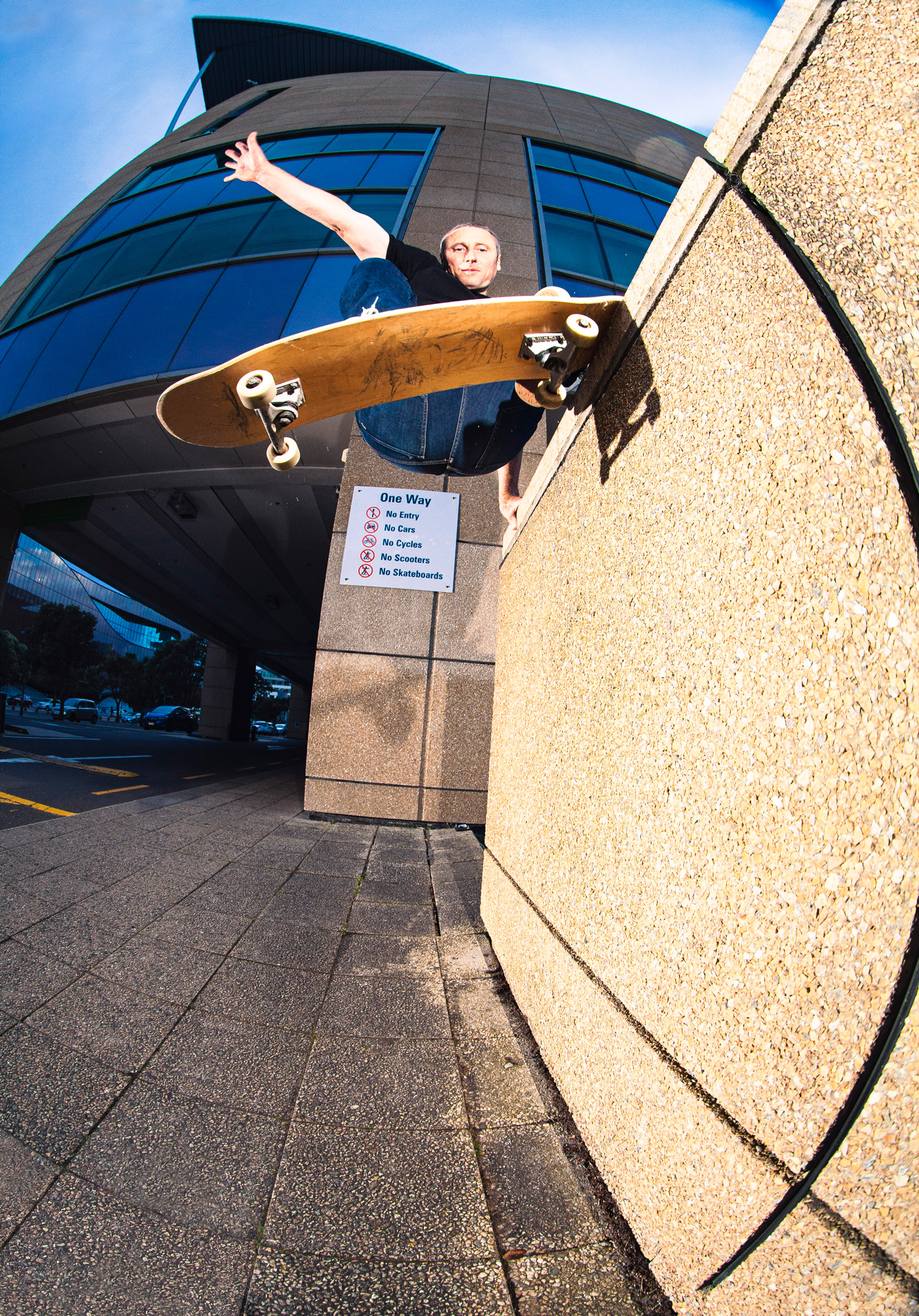
Above: Sam Palmer, layback wollie noseslide. Not a spot (Te Papa). Photo by David Read. Hero image: Skate the rooftops amongst the trees. Treetops.
The more spots I made, the more I was motivated to keep going because I saw first-hand the enjoyment people got from them
How did it all start for you?
Making these skate spots started from an interesting headspace. At the time, I had a negative lens on most things. After hearing people talk about how skateboarding spots in Wellington were lacking, I ended up channelling my negative energy into actioning what was possible.
How has your perspective on making spots changed?
The more spots I made, the more I was motivated to keep going because I saw first-hand the enjoyment people got from them, and this had a huge effect in shifting my thoughts to a more positive space.
How did you source the materials?
With a building background and a boot full of tools, the next step was being resourceful about sourcing materials. Often I would come across discarded pieces of wood and would appreciate their potential to be repurposed into a skate spot. Keeping the cost down was important to demonstrate what was possible on a small budget, and most of the wooden creations cost around $20.
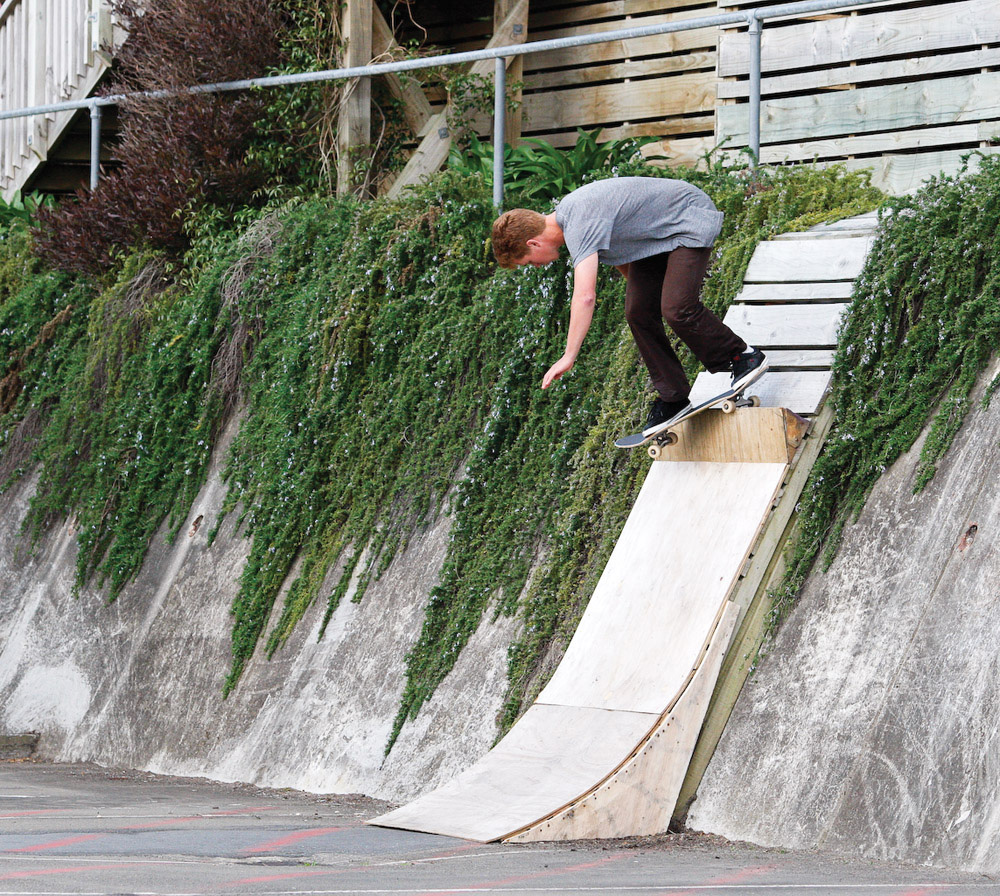
Tim Watson, backside Smith stall, Newtown, Wellington. Photo by David Read
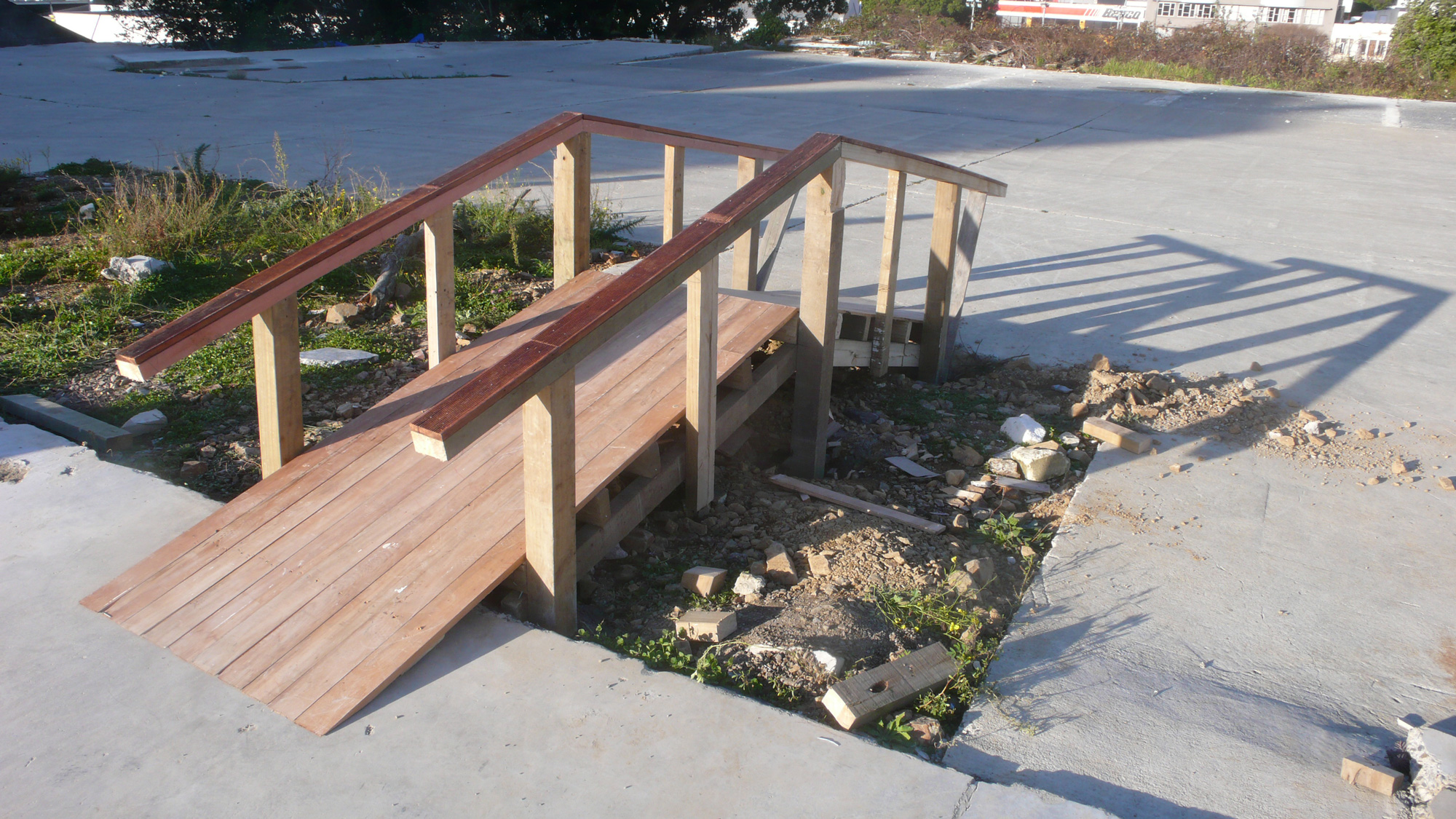
Gaps are made to be bridged. Tory Street (Pre-Pukeahu)
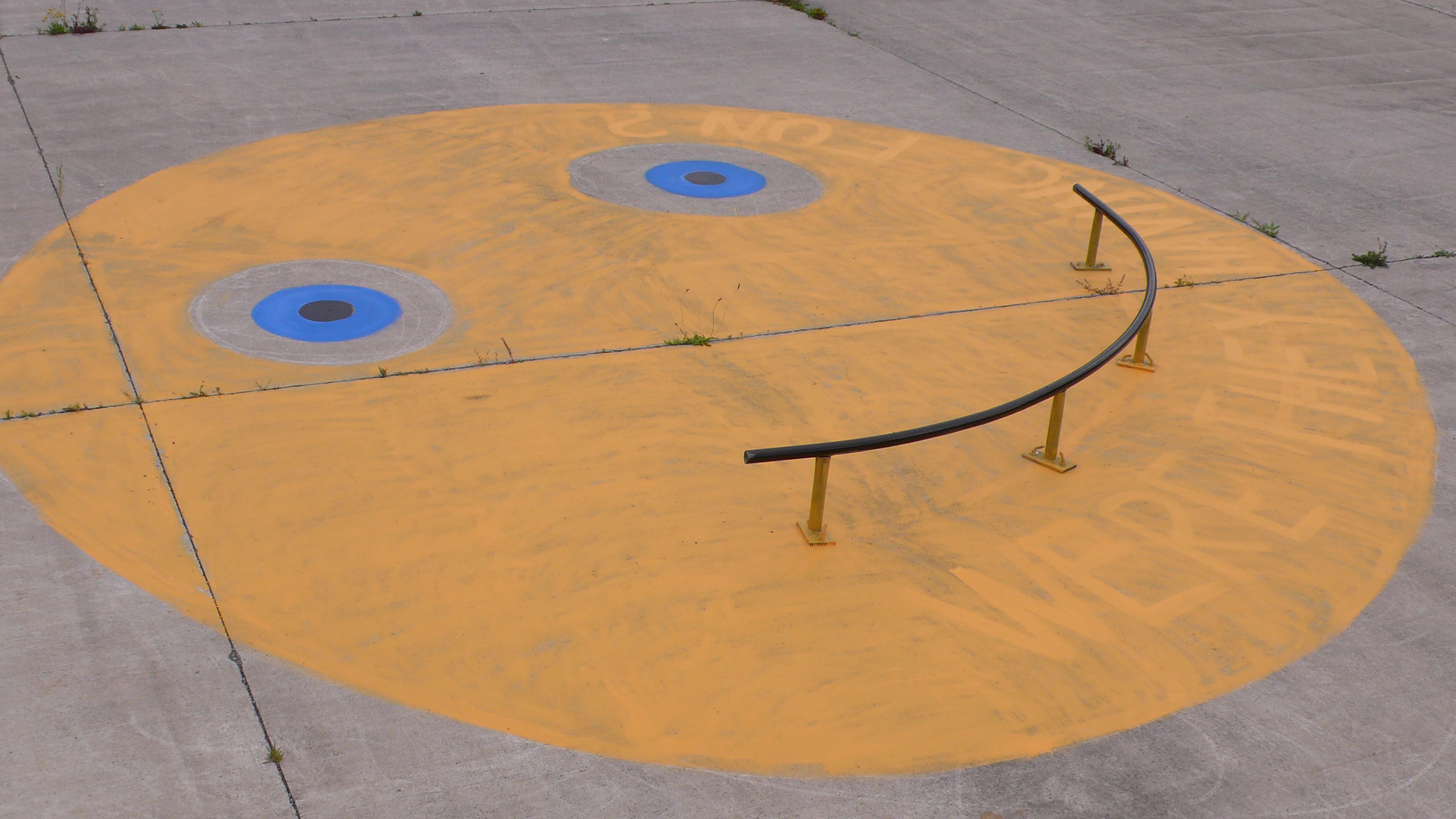
We’re they having fun? The simple pleasure of a flat but curved bar. Tory Street (Pre-Pukeahu)
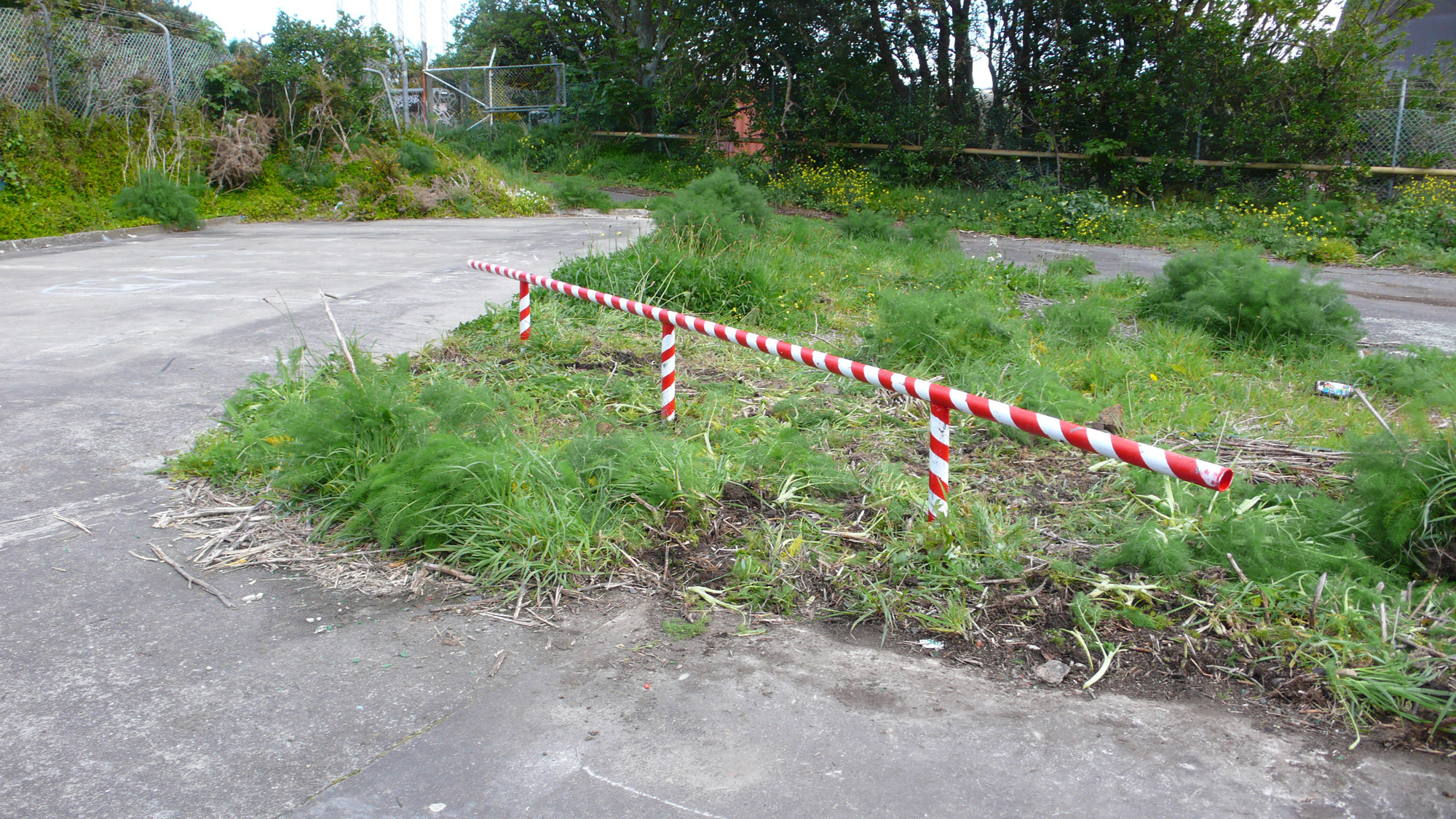
Dan Gemmell dreamed of a barbershop rail. Newtown DIY.
skateboarding offers me the biggest gift of a clear mind, the sense that life can be simple
How long did you spend on these creations? And who else was involved?
The bulk of these DIY spots were made between 2008-2010, and typically the wooden creations took 2-3 days. I was conscious about not spending too much time on something that might be gone the next day.
I am forever grateful for the help, support and special memories from Delia Culling, Rohan Skilton, Lee Corleison, Mike Toseland, Jeremy Bartlett, Sam Clark, Richard Smith, Jeremy Palmer, Kevin Francis, Chris Hardy-Jones, Conan Marriott, Nico Gottschalk, Tim Watson, Dan Gemmell, Chris Maessen and Fred Shallcrass.
Treetops and The Ghetto Spot are still thriving. What’s your view on that?
I am super stoked for these thriving skate communities where people can continue to create and evolve their own spaces and versions of what is important and meaningful to them.
What is the biggest gift skateboarding has given you?
Skateboarding has shown me a world filled with so much beauty and freedom and has contributed to enhancing my well-being, building resilience and making lifelong friends along the way. These days skateboarding offers me the biggest gift of a clear mind, the sense that life can be simple, and when I skate, I feel free and content.
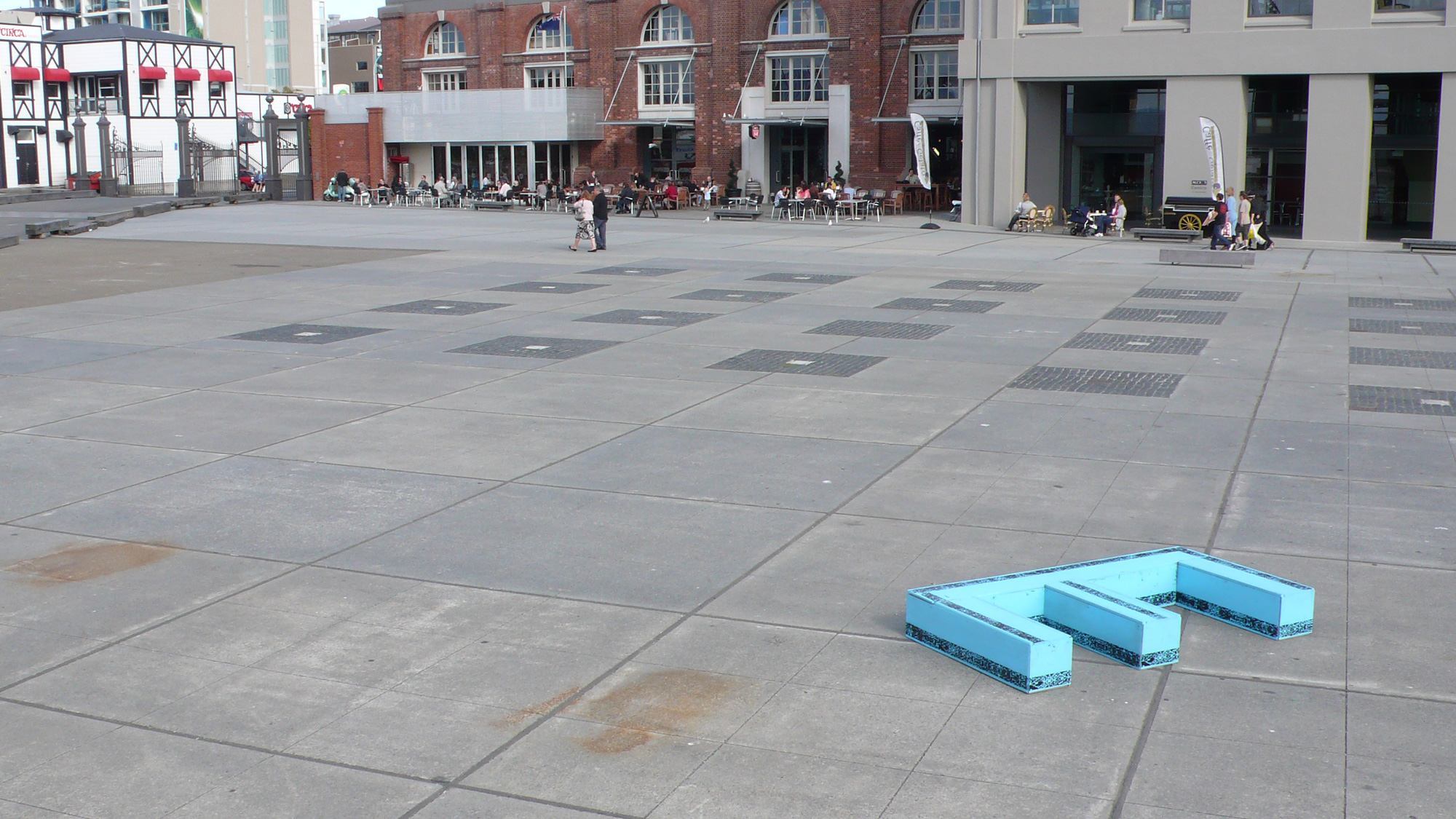
Pick a letter out of a bowl, make it and skate it. The Brewery (Odlins Plaza),
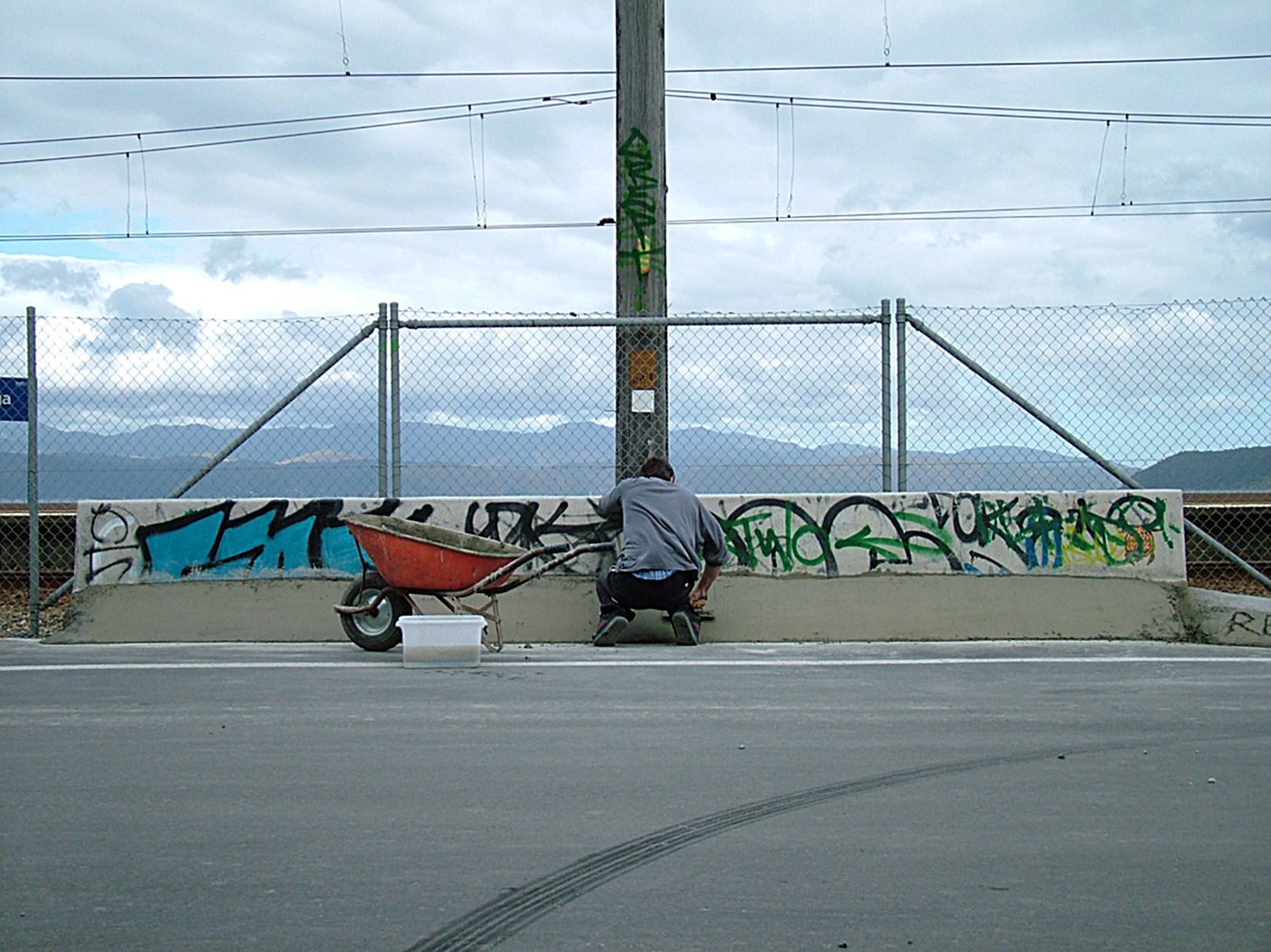
Build it as far away from The Brewery as possible, and they will come. Ngauranga.


